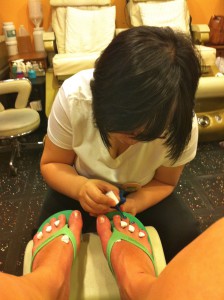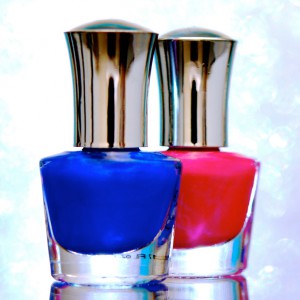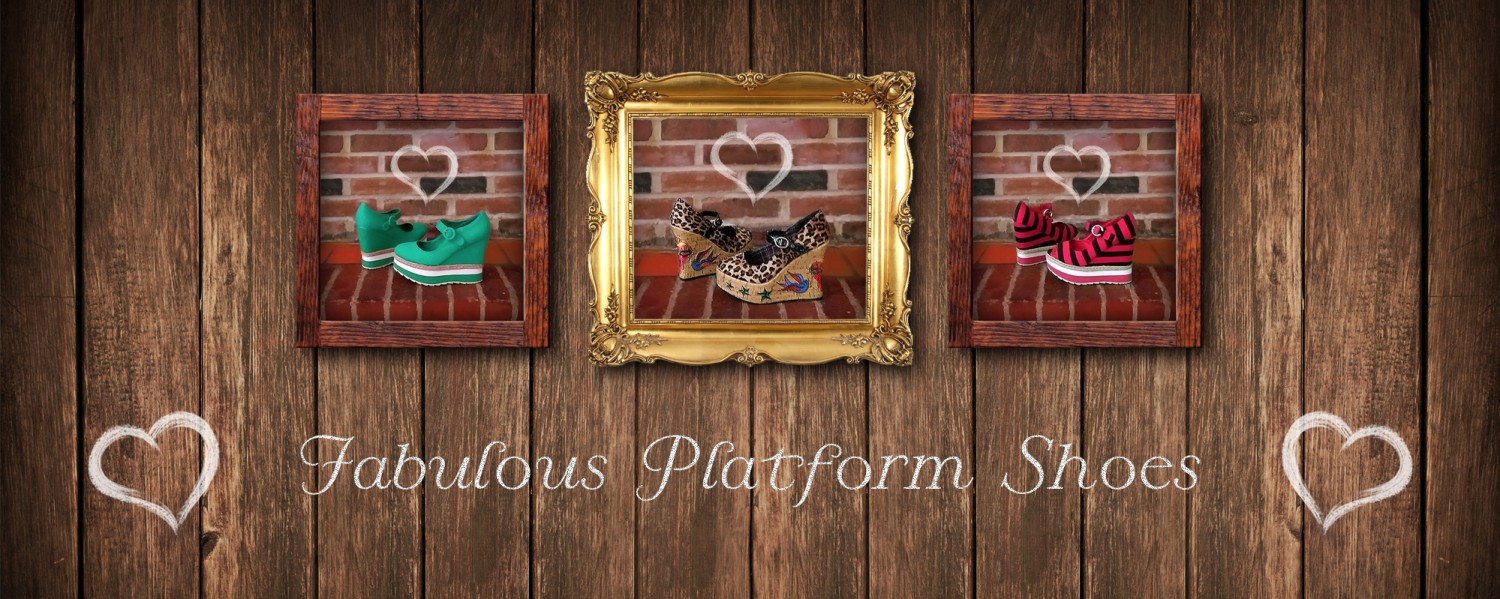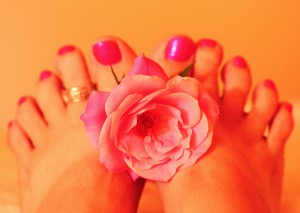So, the summer’s officially over. This is when my feet need a bit more extra care after wearing heels and having my tootsies exposed in sandals for about 3 months. During these months I’ll get a pedicure more frequently, but now the fall/winter is upon us I like to go polish free. Needless to say after not seeing the light of day for months my toenails are a tad bit dehydrated, and, dare I say it – they have that dreaded yellow tinge!
 So, what is a pedicure?
So, what is a pedicure?
A pedicure is a great way to take care of your feet. It’s a cosmetic treatment and although of course you can take care of your own feet at home, when a pedicurist looks after them it ensures professional care in a relaxing environment. Think of it as the time you deserve to pamper yourself. A pedicure cleans your feet and provides nail care… but the best part is the foot and lower leg massages!
What’s involved?
Pedicures are provided at spa salons and involve you relaxing in a remote-controlled massage chair with a foot sink. Please note: it’s best to wear something like leggings that you can pull up to the knee or shorts, something that’s easy to expose up to the knee. And it’s best to wear flip-flops, but don’t worry if you forget as they supply throw-away flip-flops (but bear in mind these are difficult to walk in!). You’re always advised not to shave your legs before a pedicure as any kind of scratch or open cuts can invite bacterial infections. If you’re worried at all about the hygiene standards of a salon feel free to ask for a proof of sanitation certificate.
I’ve broken it down into 10 steps so you know what to expect:
Step 1
As soon as you arrive at the salon you’ll be asked to choose a nail polish. I always take my time with this so don’t feel like you’re being rushed.
Step 2
You’ll be directed to go and sit in the big, comfy massage chair and soak your feet in the warm, bubbly water. This softens the skin for easy removal of dry skin. You can ask for a magazine or you can just sit and relax and enjoy being massaged by your chair (I wish I had one of these at home!).
Step 3
The pedicurist will remove any old polish on your toenails and then use either a foot-file or a pumice stone to remove any hard skin on the balls of the feet and heels. This part always tickles my feet and I can only stand it for so long!
Tip: I know a lot of people ask about this so I’m going to address it here. Don’t worry if there’s no conversation between yourself and the pedicurist, this is normal! You want them to concentrate on your feet – yes?! Of course they’ll ask some basic questions at the start but then just relax and let them get on with their job.
Step 4
A cooling exfoliating gel is used to clean the feet and lower legs, and then rinsed off.
Step 5
A moisturizing lotion is applied and this is when you get a lovely foot and lower leg massage!
Step 6
Typically the pedicurist will then ask if it’s ok to clip your toenails, file and reshape them, if needed. (Just bear in mind you don’t want your nails cut too short, or filed too rounded, as this can cause ingrown toenails.)
Step 7
Oil is then massaged into the nail beds to loosen the cuticles. Sometimes the cuticles need to be clipped using a cuticle trimmer, or they can be pushed back instead, using a small wooden stick. A buffer block is then used over the nail to give it a buff and shine.
Step 8
At this stage you’ll still be relaxing in the chair but you’ll put back on your flip-flops, in preparation for the nail polish. Then the spongy toe-piece is placed between your toes to separate them out. This stops them from moving about too much and spoiling the polish.
Step 9
A base, clear polish is applied to your nails and then two coats of your chosen color. A clear top coat will then seal the color and maintains the glossy look for longer.
You’ll then be moved to another seating area where you place your feet under either a fan or ultraviolet light for about 5-10 minutes, until the polish is completely dry.
The whole pedicure process can last between 30 minutes to an hour.
Benefits of pedicures
If you get regular pedicures then chances are if there’s anything wrong such as fungal infections, or signs of corns or bunions, your pedicurist will catch this early on and, like most things, these conditions are easier to treat in the early stages.
Regular clipping, cleaning and cutting of toenails helps prevent any unwanted ingrown toenails, which can lead to infections. Due to the oils and lotions, together with the warm water and massages, these all help to preserve the skin’s moisture and moisturized feet are less likely to suffer from those dreaded ‘cracks’ and blisters. The removal of dead skin cells through exfoliation encourages new cell growth, creating smoother feet. As I previously said I think the best thing about a pedicure is the massage and this helps to promote circulation and relieve tension, and above all it relaxes the body, which helps to eliminate stress.
The downside of pedicures – i.e. nail polish
I know that for some people who have pedicures for a long period of time they end up with nasty looking toenails. Why is this? Well for our nails to stay healthy they need exposure to oxygen, just like our skin. Our nails are made up of the same cells as our skin, epidermis cells, which are filled with keratin (a protein), which allows water to pass through them. There are several reasons for yellow nails; fungal infection, pulmonary disease, smoking, but in a lot of cases yellow nails are a result of staining due to contact with certain foods and chemicals found in nail polish. This results in your toenails absorbing some of the pigment from the polish. Even when a clear base coat is used I find the color can seep through and cause the yellowing, so this doesn’t always work for everyone. I find greens, dark reds and blues the worst offenders for staining nails.
 The evolution of nail polish!
The evolution of nail polish!
Luckily for us nail polish has evolved somewhat over the eons! I did some research and found that it was originally used in China around 3000 BC and believe it or not gold, silver, red and black were just as popular as they are today! Most of the nail polishes on the market now contain chemicals to help speed up the drying process, create a glossier sheen and of course the longer lasting the better, and most are non-toxic.
Go and treat yourself!
There’s always going to be the naysayers who think you’re going to come away from a pedicure with a nasty fungal infection but I’ve never come across anyone who has – yet! Always go to a recommended or reputable salon and if you don’t feel comfortable you can always leave. In my experience, pedicures are good for your feet, and it’s a great way to pamper and treat yourself.
Try not to ignore your feet, they’re a very important, but often ignored, part of the body. Either do your own pedicure, or visit a salon, once a month to keep your feet in tip-top condition.
Thanks for reading! If you’ve any questions or would like to share your pedicure experiences, please fill in the comment box below.

